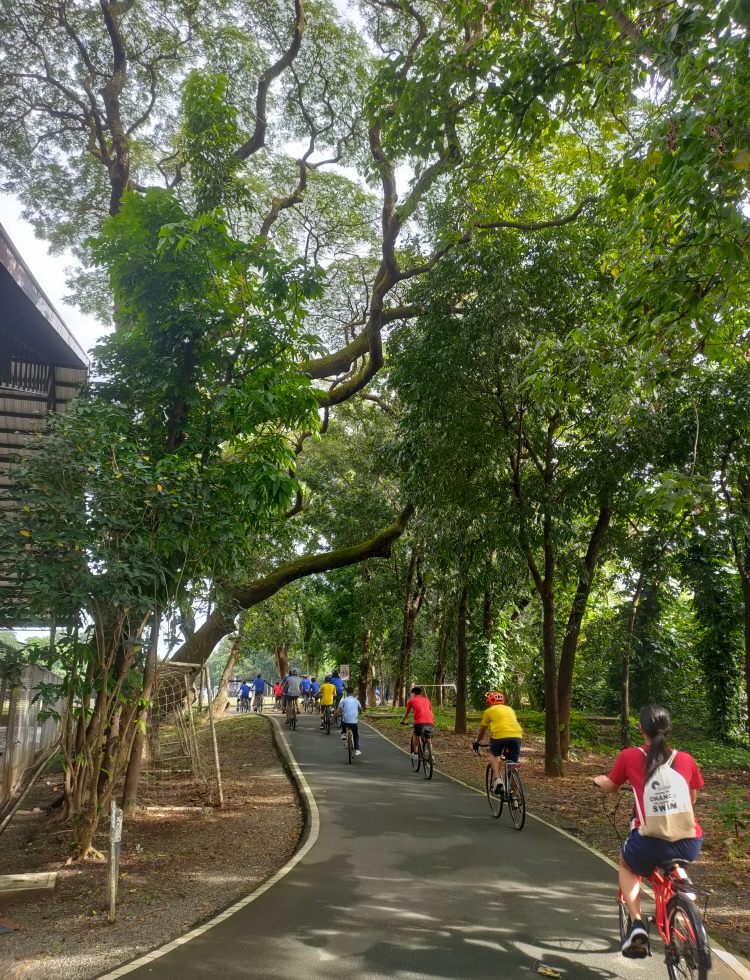Making biking more accessible is the way if we really want to develop a bike-riding nation. Aside from infrastructure, creating opportunities and spaces for new bike learners should be prioritized.
While several cycling initiatives have popped up over the recent years, we can’t deny the potential impact of a more institutional approach—take Ateneo Senior High School’s (ASHS) new elective for their Physical Education (PE) class.
In a Facebook post, senior high school PE associate faculty member Coach Jah Agcaoili shared the immediate effect of their first class.
“From 6-10 bikes na madalas naka-park [to approximately] 30-50 bikes parking now this sem,” he wrote.
While the objective of the elective is primarily to teach the students how to ride a bike, it will also delve into road etiquette, bike conditioning drills, and the impact cycling can make on the environment and overall transportation situation.
“We also aim to make them realize na it is one of the viable tools to manage stress and improve total well-being. Kung ‘di ka athlete or fan of working out in the gym, biking is a go-to,” Agcaoili shared.
[READ: First Bike Ride is a brighter look at cycling culture and sustainable transport via Multisport.ph]
The rise of pandemic riders influenced the development of the class. Agcaoili had first introduced biking to the former subject area coordinator in 2020, who then recommended it to ASHS’ current coordinator. The reasons they adopted the recommendation to implement campus cycling as an elective included the “continued need for for physical activity opportunities as an exit plan for the pandemic… [and to address the] increased motorized vehicle count in the campus and in the area of Katipunan.”
Agcaoili was then tasked to formulate the cycling program. “Nag-simulate kami ng pilot study and gathered data to support the feasibility of biking as a class in SHS. Initially, the goal was to grab the opportunity for the community to see biking as a form of physical activity and gladly, it was accepted warmly,” he said.

This is ASHS’ first time offering the cycling elective. There are currently 25 students in the class, with around one to three first-time learners, according to Agcaoili.
While there are currently no plans to offer the class to other Ateneo units or outsiders, the next step is to “establish evidence through a study of how pedicabs or nonmotorized tricycles can be an alternative transport inside the campus, and plan to gather data on it to be shared to the [Ateneo] administration for consideration,” Agcaoili said.
“With the efforts of the university to care for the environment, this proposal can be the PE Subject Area’s contribution for alternative transport aside from e-jeeps, and to make the campus noise and pollution-free not just for academic purposes but for wildlife protection as well.”
For us looking on the outside, the hope is that this curriculum will not only inspire other institutions to follow suit but also eventually influence public structure. Hopefully, it can show authorities, decision-makers, and city planners that it’s high time we truly and properly invest in infrastructure that can support this greener mode of transportation.
This means proper and safer bike lanes, not just within cities, but across them.
[READ: Are we ready to have bikes as the ‘new normal’ mode of transportation?]
These are big dreams still, but as Agcaoili states, “Daming opportunities… but focus is less muna sumemplang sa klase.”
Ah, if only we had this class back in my student years.